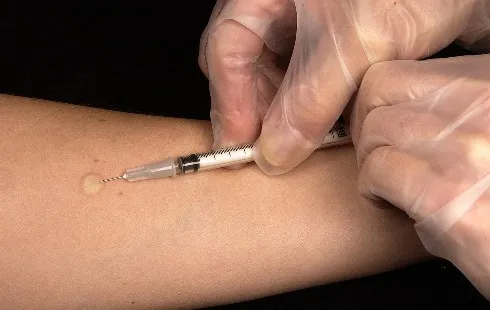
Trump's Tariff War: China Urges Immediate Repeal of Tariffs Amid Countermeasures
Section: News
Scientists used a microchip that recreates a breathing lung to study pulmonary edema and test a new drug against this life-threatening disease, raising hopes that this organ-on-chip technology could speed up drug development and replace animal testing.
The lung-on-a-chip was first developed by Donald Ingber's team at the Harvard University Wyss Institute two years ago using technology from the computer microchip industry. The microdevice mimics the tiny air sacs in the lungs where gases from the air we breathe are exchanged with the blood.
About the size of a memory stick, the plastic microchip contains two chambers separated by a thin leaky membrane. This flexible membrane has living lung cells with air flowing through them stuck on one side, and blood vessel cells immersed in fluid on the other. Gases or fluids can be transferred across the membrane between lung and blood vessel tissues.
The membrane and attached cells are stretched and relaxed by a vacuum system in the same way as an air sac during breathing movements.
Now, in a study published this week in Science Translational Medicine, the Harvard scientists used these microchips to mimic pulmonary edema, showing for the first time that organs-on-chip can be used to study human disease and for drug screening.
Pulmonary edema is the abnormal buildup of fluid in the lung air sacs, which leads to respiratory failure and if left untreated can be fatal. The most common cause of pulmonary edema is congenital heart failure, but it can also occur as a side effect of some drugs.
In this study, the researchers used interleukin-2 (IL-2), a chemotherapy drug with severe side effects, to recapitulate pulmonary edema in the lung-on-a-chip. Injection of this drug into the microchip blood chamber triggered fluid leakage across the membrane into the air space, recreating what happens in the lungs of human patients treated with IL-2.
But there was a surprising result: the physical action of 'breathing' aggravated fluid leakage into the air chamber. IL-2 causes cell connections to break, which opens holes in the tissues. It turns out that the mechanical strain of the breathing motion dramatically increases the size of these holes. 'This truly changes the way we view this disease process, as well as how we might treat this type of condition' says Ingber.
This unexpected finding led the team to test an experimental drug developed by GlaxoSmithKline (GSK) which blocks a protein involved in controlling tissue mechanical tension. They found that the drug 'fully prevents the IL2-induced edema response'. In a collaborative study, a GSK research team led by Kevin Thorneloe showed that the drug curbed pulmonary edema symptoms caused by heart failure in animal models, confirming the lung-on-a-chip results.
Drug development is a long and costly process that currently relies on animal testing, and more often than not drugs that perform well in animal models then fail in the human clinical trial stages.
'Major pharmaceutical companies and government funding agencies are now beginning to recognize a crucial need for new technologies that can quickly and reliably predict drug safety and efficacy in humans in preclinical studies' says Ingber.
Human cells cultured in a three-dimensional matrix are widely used to test drug toxicity but they lack the complex properties that define organs, such as tissue-tissue interactions or mechanically active environments. Organs-on-chip could be the solution to this problem.
'Our finding that breathing motions are critical to mimic the IL-2 toxicity response is a clear example of how this could not be done with conventional culture models' says Ingber.
In the past years several groups have built organ-on-chips that mimic lung, kidney, heart and other organs, but this study is the first to model a human disease and to successfully test a drug in a microchip. Shuichi Takayama, an expert on biomedical engineering at the University of Michigan says
'This study demonstrates that this type of technology is promising for replacing animal models in some aspects of drug screening and testing.'
However, the organ-on-chip technology is in its early stages and Ingber believes 'animal models will be around for a long time'.
'The goal is to develop organ chip replacements for one particular animal model at a time, and hence, slowly shift the emphasis away from animal models. This would represent a major advance in the pharmaceutical field, and have great implications for testing of chemicals, toxins and cosmetics as well' he says.

Section: News

Section: News

Section: Health

Section: News

Section: News

Section: Travel

Section: News

Section: News

Section: Politics

Section: Arts

Health Insurance in Germany is compulsory and sometimes complicated, not to mention expensive. As an expat, you are required to navigate this landscape within weeks of arriving, so check our FAQ on PKV. For our guide on resources and access to agents who can give you a competitive quote, try our PKV Cost comparison tool.

Germany is famous for its medical expertise and extensive number of hospitals and clinics. See this comprehensive directory of hospitals and clinics across the country, complete with links to their websites, addresses, contact info, and specializations/services.

Join us for a captivating organ concert featuring Giacomo Gabusi from Bologna. Experience an evening of classical music with works by Wagner, Bossi, and Messiaen, among others. This event is part of the Pasinger Orgeltage series, promising a delightful musical experience. Admission is free, but...
No comments yet. Be the first to comment!